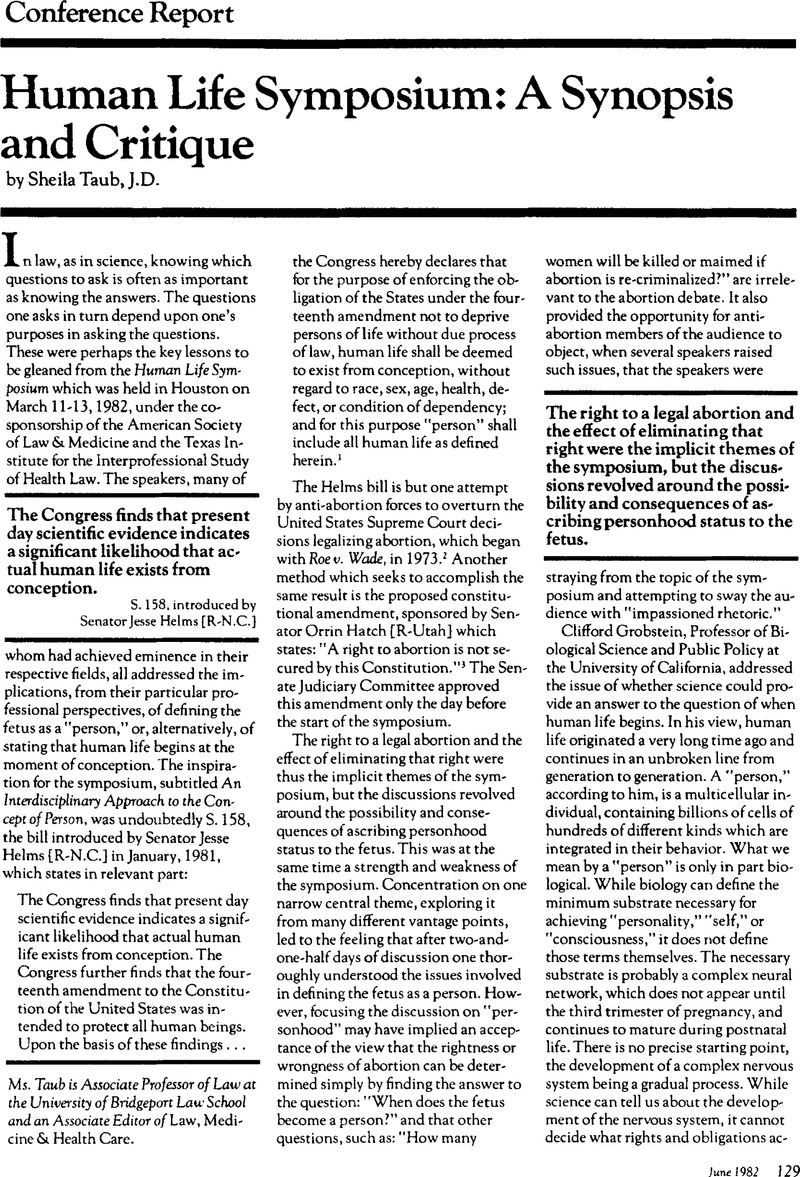No CrossRef data available.
Article contents
Human Life Symposium: A Synopsis and Critique
Published online by Cambridge University Press: 27 April 2021
Abstract
An abstract is not available for this content so a preview has been provided. Please use the Get access link above for information on how to access this content.

- Type
- Conference Report
- Information
- Copyright
- © 1982 American Society of Law, Medicine & Ethics
References
The Human Life Bill: Hearings on S. 158 before the Subcomm. on the Separation of Powers of the Senate Comm. on the Judiciary, 97th Cong., 1st Sess. 2 (1982).Google Scholar
Roe v. Wade, 410 U.S. 113 (1973).Google Scholar
S. J. Res. 110, 97th Cong., 1st Sess. (1981).Google Scholar
C. E. Curran, Politics, Medicine, and Christian Ethics: A Dialogue With Paul Ramsey (Fortress Press, Philadelphia) (1973) at 131: I do not find the argument from early fetal development or the existence of brain waves convincing at this time. EEG at the end of life is a test to see if there is the potentiality of life remaining in the person. It is not necessarily true that the same material test which is used at the end of life should also be used at the beginning.Google Scholar


